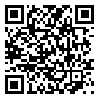Volume 65, Issue 2 (8 2008)
Tehran Univ Med J 2008, 65(2): 1-11 |
Back to browse issues page
Download citation:
BibTeX | RIS | EndNote | Medlars | ProCite | Reference Manager | RefWorks
Send citation to:



BibTeX | RIS | EndNote | Medlars | ProCite | Reference Manager | RefWorks
Send citation to:
Malekzadeh R, Shakeri R. Celiac disease in Iran. Tehran Univ Med J 2008; 65 (2) :1-11
URL: http://tumj.tums.ac.ir/article-1-825-en.html
URL: http://tumj.tums.ac.ir/article-1-825-en.html
Abstract: (9994 Views)
Background: Until a few decades ago, celiac disease was considered to be essentially a disease of European people and to be very rare in Middle Eastern countries. During the last two decades, having met the criteria for the WHO general screening, the advent and application of novel serological assays used to screen for celiac disease and the use of endoscopic small bowel biopsy have led to increasing numbers of diagnoses of celiac disease in western countries. With this new data, our knowledge on both the clinical pattern and epidemiology of celiac disease has increased, and is now known to be a relatively common autoimmune disorder. Studies performed in different parts of the developing world have shown that the prevalence of celiac disease in this area is similar to or even higher than that in western countries. In fact, celiac disease is known to be the most common form of chronic diarrhea in Iran. However, contrary to common belief, celiac disease is more than a pure digestive alteration. It is a protean systemic disease, and, with a 95 percent genetic predisposition, has a myriad of symptoms including gastrointestinal, dermatological, dental, neurological and behavioral that can occur at a variety of ages. Monosymptomatic, oligosymptomatic, atypical (without gastrointestinal symptoms), silent and latent forms of celiac disease have been identified. In this study we review the epidemiology of celiac disease based on the studies performed in Iran and discuss its pathogenesis, the role of antibodies in the diagnosis of celiac disease and the importance of its diagnosis and treatment in Iran.
| Rights and permissions | |
 |
This work is licensed under a Creative Commons Attribution-NonCommercial 4.0 International License. |





